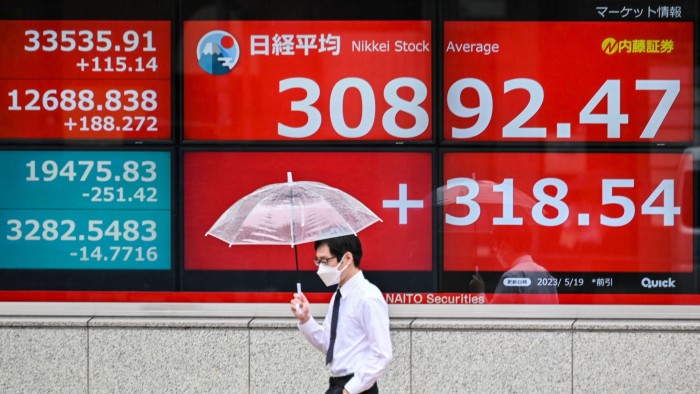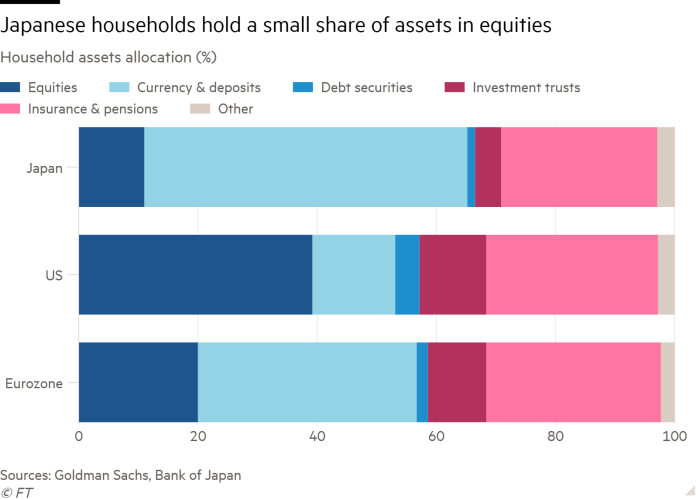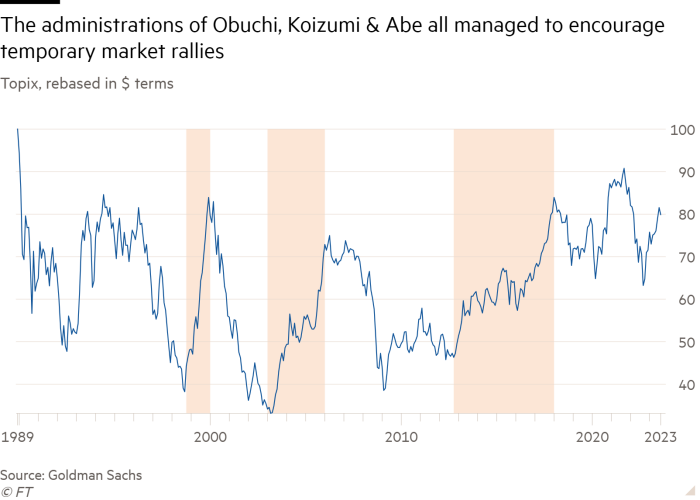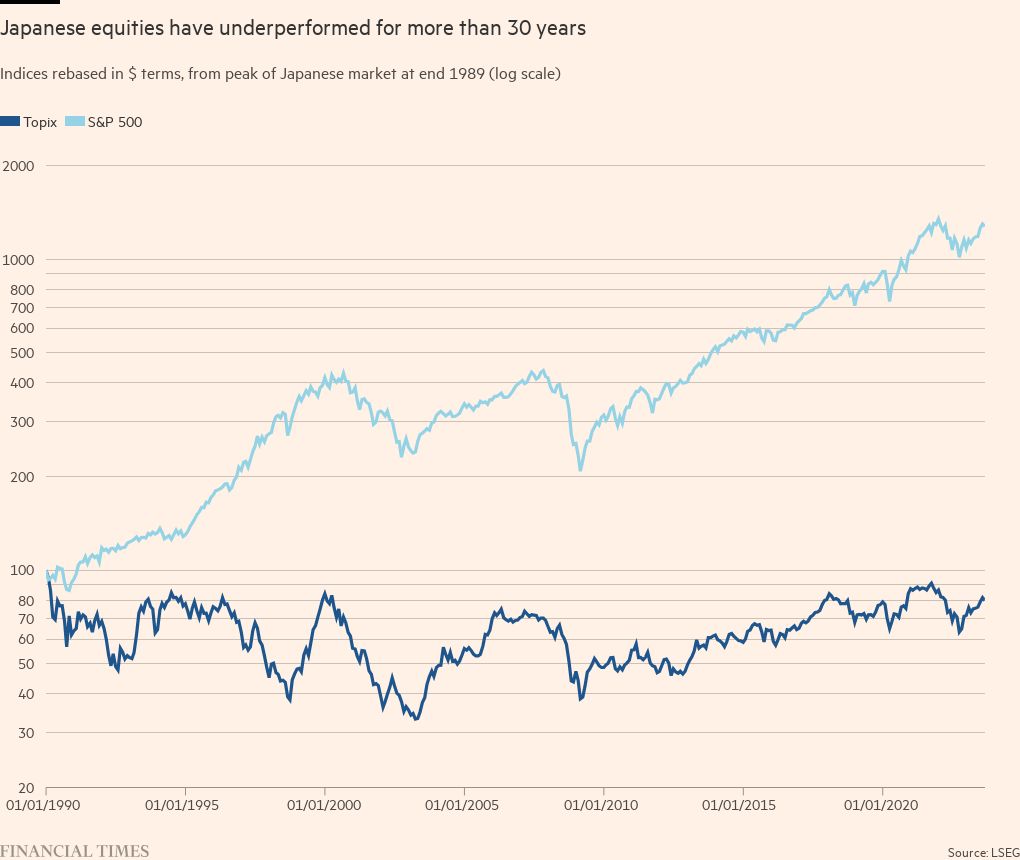It’s time for Japanese equities to leave the doldrums

Roula Khalaf, Editor of the FT, selects her favourite stories in this weekly newsletter.
The writer is Goldman Sachs’ chief Japan equity strategist
Even after this year’s 26 per cent rally in Japanese equities, one US dollar invested in Japan’s main stock index, Topix, at the end of December 1989 would, almost 34 years later, still only be worth around 80 cents. If that dollar had been invested in the S&P 500, the main US index, its value would have multiplied more than 12 times over that period. For anyone who has dedicated their career to the Japanese markets, these are humbling statistics.
War in Ukraine and the aftermath of the global pandemic, however, have indirectly created an environment that could finally reverse some of Topix’s underperformance. Numerous supply chain disruptions, coupled with a weak yen, have contributed to Japanese inflation levels not seen since the 1980s. Japan also finds itself in a far more challenging regional geopolitical position. It has responded with a series of self-strengthening measures, some focused specifically on market reform.
By encouraging Japanese households to allocate more of their assets to domestic equities, and by asking Japanese corporates to raise wages and improve shareholder returns to help households offset the loss of purchasing power amid rising inflation, prime minister Fumio Kishida hopes to create what the Japanese cabinet office calls a mutually-beneficial “virtuous cycle of growth and asset income”.
The corporate governance reforms initiated this year by the Tokyo Stock Exchange (TSE) and the government’s plan to double financial asset income for individual investors represent just two pillars of a longer-term growth strategy.
This could facilitate a major reassessment of household asset allocations away from risk-free, low-yielding assets. According to the Bank of Japan, only 13 per cent of Japan’s ¥2 quadrillion of household assets are in equities. This compares with almost 40 per cent for US households.
The relaunch of the government’s Nippon Individual Savings Account (Nisa) tax-free investment scheme for individuals, in January, will also play a significant role in any transition towards greater levels of equity ownership in Japan.
But this is not the first time we have seen rising optimism regarding equities. Despite its lacklustre longer-term returns since the bursting of the Japanese equities bubble in, late-1989, Topix has had multiple periods of outperformance versus global peers since then. These rallies have all ended in disappointment and decline, though.

So, focusing on three of these periods may help establish whether the current rally is another shortlived boom-and-bust, or if it could develop into a more fundamental marketwide re-rating.
The first main post-bubble rally in Japan was from 1998 to 2000, when former prime minister Keizo Obuchi was in power. The second, from 2003 to 2006, was driven by former prime minister Junichiro Koizumi’s focus on structural reform. The third lasted from 2012 to 2017, its main catalyst being former prime minister Shinzo Abe’s reforms, known as Abenomics.
All three rallies were triggered by policy responses to preceding periods of crisis. These policies convinced foreign investors that Japan’s structural challenges were being addressed, causing an acceleration of net foreign investor buying of Japanese equities, which in turn pushed the market higher. The upward trajectory continued until unexpected political change, or an adjustment in policy direction, or investor impatience with the pace of reform, undermined the momentum. Foreigners turned net sellers and the index gave back most or all its gains.
The focus on doubling financial asset income and corporate governance reform looks similar to previous policy initiatives. But, as mentioned above, prime minister Kishida is also responding to two new developments: more challenging geopolitics; and the sudden appearance of significant Japanese inflation. As a result, there is a top-down sense of urgency, as evidenced by the TSE’s reform push, that may not have been present before.

There is also a far closer alignment between these top-down initiatives, and bottom-up engagement from foreign and domestic investors. Corporates are increasingly under pressure from their main shareholders. The most recent AGM season saw some notable double-digit declines in management approval ratings. Before then, it had been very rare to see this type of public opposition.
However, Topix remains under-owned by foreign investors and domestic households, compared with previous peaks. This positioning might need to be reassessed if the momentum behind reform is maintained.
The Japanese market is still cheap relative to its peers, with valuations suppressed by inefficient capital allocations, high levels of excess cash, and low profit margins. About 47 per cent of the TSE’s “prime” listing tier, the exchange’s top echelon, still trades at a discount to book value.
With co-ordinated shareholder pressure from below pushing for meaningful corporate restructuring, combined with top-down visions of a more shareholder-friendly Japanese market, a once-in-a-generation value unlock trade for Japan finally looks possible. It will require sustained pressure from both directions to succeed, but we have never seen such a well-aligned approach before.
If the confluence of positive factors cannot be converted into a major re-rating of the Japanese equities market, it is difficult to imagine when there will be a better opportunity.
Letter in response to this article:
Caution is the watchword before investing in Japan / From James Hanshaw, Zurich, Switzerland


Comments